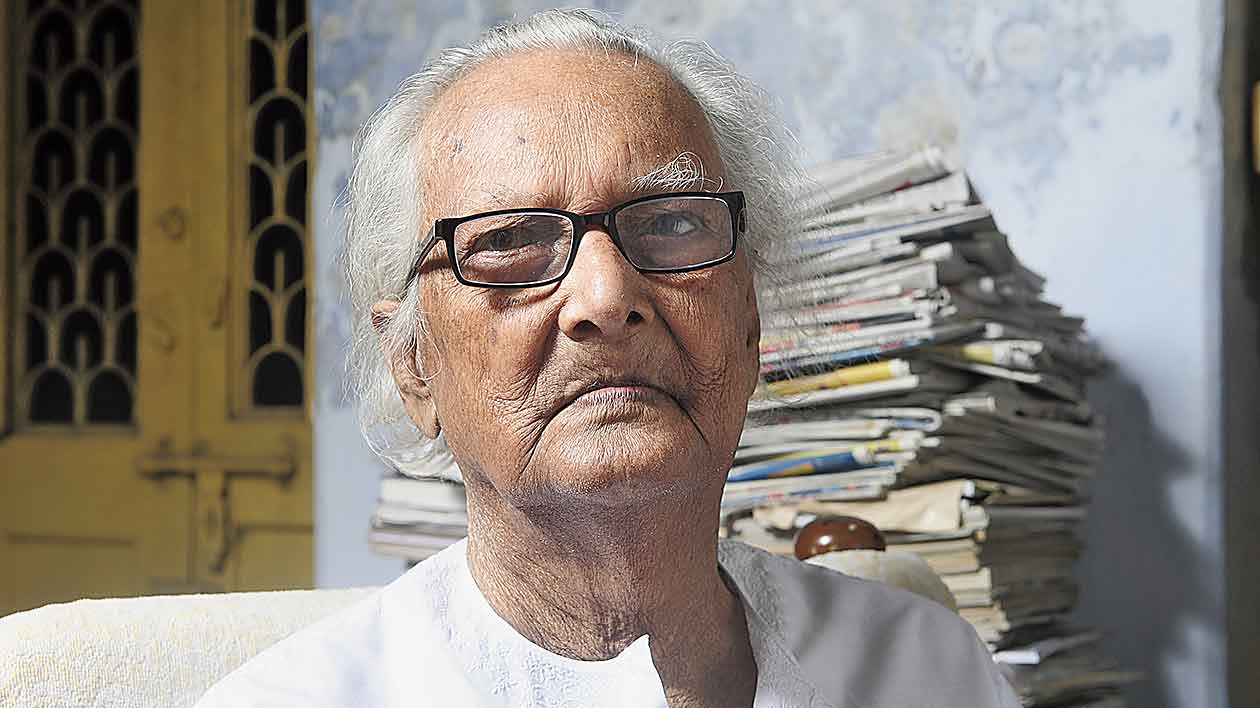A board, a few brushes, a bottle of black ink and sundry other drawing material. That’s all Narayan Debnath needed to fire the imagination of generations of young Bengali readers over six decades with his comic strips that have achieved cult status.
The creator of Bantul the Great, Handa Bhonda, Nonte Fonte and several other naughty and doughty companions of childhood passed away on Tuesday at a south Kolkata clinic where he was admitted since December 24. He was 96.
Debnath was suffering from low haemoglobin count and renal ailments. The end came at 10.15am, according to family sources. He is survived by daughter Namita and sons Swapan and Tapas.
A Sahitya Akademi awardee, Debnath got the Banga Bibhushan in 2013 and a DLitt from Rabindra Bharati University in 2015. He got the Padma Shri last year and just six days back, the award reached his bedside though he was already on BiPap support.
Born and brought up in Howrah’s Shibpur, Debnath went to a private art school in Dharamtala that later amalgamated with the Indian Art College. The outbreak of World War II halted his training after five years.
Debnath started by designing labels for cosmetic companies and creating publicity stills that would be shown on slides in cinemas.
A proof-reader introduced him to Dev Sahitya Kutir, for which he started illustrating book covers. Then an offer came from the publication’s children’s magazine Suktara to create a comic strip.
A sporadic start was made with four panels of Bhonda in end-1951. In 1962, Handa joined him and the bumbling boys were launched in a monthly comic strip.
The concept was quite alien and barring Kafi Khan (Pratul Chandra Lahiri)’s Sheyal Pandit in Jugantar, there was no local inspiration. “I drew them in the Laurel and Hardy mode. The fat one, named Bhonda, was cool and cautious, while his counterpart was Handa, a bit too smart and pompous, who was always getting into trouble,” Debnath had told The Telegraph in an interview.
Their popularity created demand for a second strip, to be printed in colour. Thus was born in 1965 Bantul the Great — a hulk of a man, with a bulging chest and muscular arms but disproportionately narrow in his legs and with the face of a boy.
After four editions were published, India went to war with Pakistan. Bantul was sent to fight the enemies, lifting tanks and changing the direction of cannon shells by blowing through his mouth. Bullets bounced off him. “He came back a hero from the war, whistling. It was such a compelling visual that he became a household name,” said Rupa Majumdar, director of Dev Sahitya Kutir.
Nonte-Fonte and their boarding school exploits appeared on request from another magazine, Kishore Bharati, in 1969. His last contribution was printed in the 2017 Puja edition of Suktara.
Earlier, in 1961, he created comic strips for Anandamela to mark the birth centenary of Rabindranath Tagore.
“He remains to this day our highest selling author,” said Diptangshu Mondal of Deep Prakashan, which printed his complete works in 2014. “Unlike Herge, who had a team to help with Tintin, Debnath did everything himself — storyboard, illustration, dialogues... That alone makes him an all-time great in his field,” he added.
His last rites were performed at the Shibpur crematorium and his death was condoled by the President, Prime Minister and the chief minister, among others.
